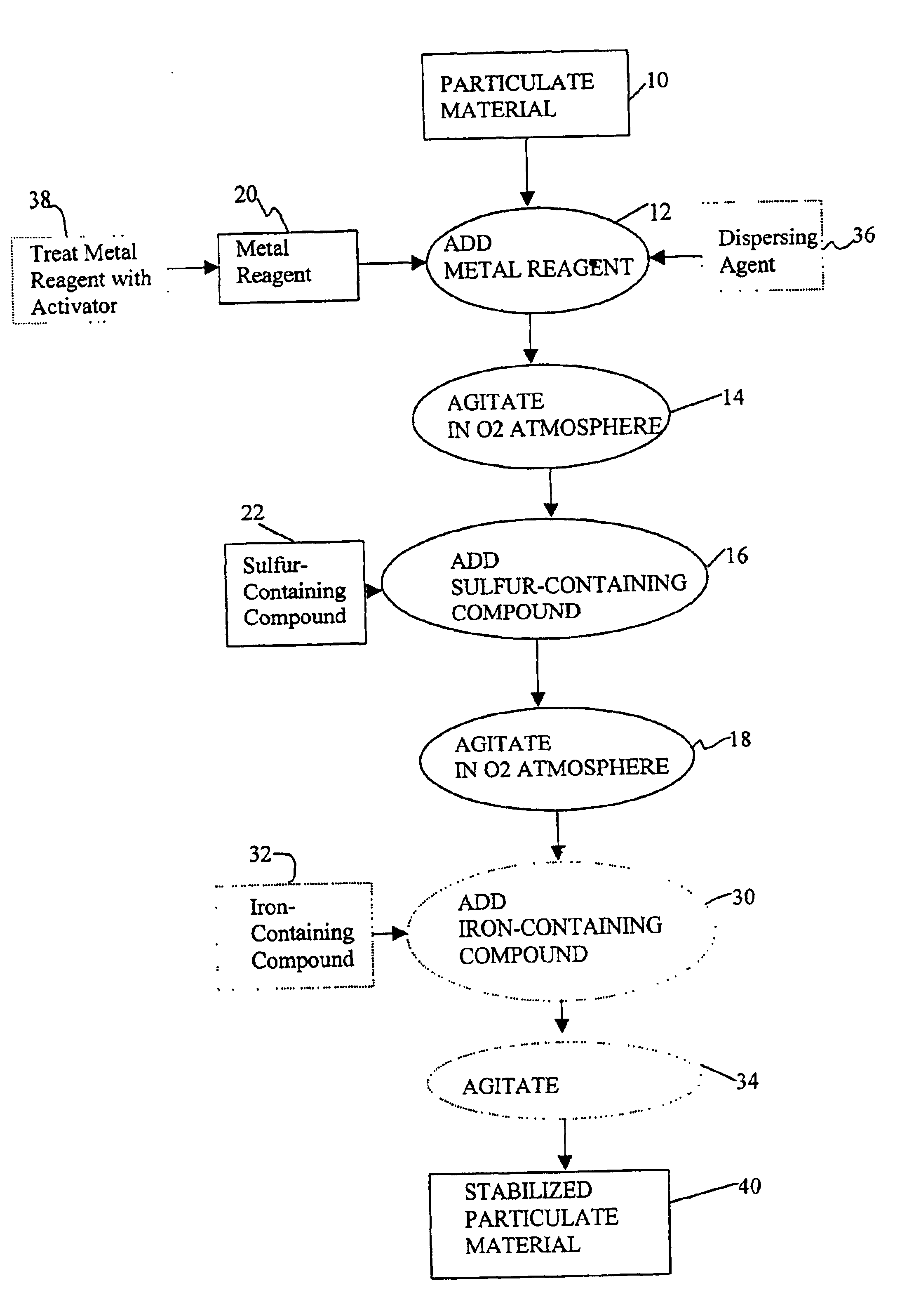Method for fixating sludges and soils contaminated with mercury and other heavy metals
- Summary
- Abstract
- Description
- Claims
- Application Information
AI Technical Summary
Benefits of technology
Problems solved by technology
Method used
Image
Examples
example 1
[0047]The present invention was demonstrated by testing seven soil samples taken from a mixed (radioactive and hazardous) waste field which contained numerous heavy metal wastes, including but not limited to mercury, dispersed throughout the soil. The soil samples were treated in 1-kilogram batches using a Kitchen-Aid double planetary mixer with a whisk attachment. The mixing that occurred was at least above 5 of the agitation index described above. A metal reagent was added to each of the soil samples, except sample 1. The metal reagent, in some samples, was treated with an activator, as shown in Table II below. In some soil samples, a wetting agent, elemental sulfur and polysulfides were added to the soil sample. The results of these experiments are shown in Table II.
[0048]
TABLE IIMixed Waste Field Demonstration ResultsReagents Added (g / kg Soil)TCLPDispersingResultsMixMetalActivatorSulfurAgentPolysulfide(ppb)1 0 g Zn0 g250 g1.5 g 85 g7,160225 g Zn8 g250 g1.5 g 85 g18.3325 g Zn8 g2...
example 2
[0050]The presence of other heavy metals in at least one of the soil samples used in Example 1 was analyzed before and after treatment. The results of the analysis are shown in Table III. The present invention also proved effective for stabilizing metals which fall under the Resource and Conservation Recovery Act (RCRA) including, but not limited to: arsenic, barium, cadmium, chromium, lead, selenium, and silver. Table III shows the concentration of metals in the treated and untreated soils, and the applicable regulatory standard, called Universal Treatment Standard (UTS).
[0051]
TABLE IIIRCRA Metal TCLP ResultsUntreated SoilTreated SoilUTSRCRA Metal(mg Hg / kg)(mg Hg / kg)(mg Hg / kg)Arsenic4.255.0Barium78.40.82521Cadmium4.080.11Chromium53.60.6Lead1310.1315.7SeleniumUndetected5.7Silver9.660.1
[0052]As is evident from the above table, the present invention will bring not only the mercury present in heavily contaminated soils and particulate materials below regulation levels, but the present ...
PUM
| Property | Measurement | Unit |
|---|---|---|
| Fraction | aaaaa | aaaaa |
| Fraction | aaaaa | aaaaa |
| Fraction | aaaaa | aaaaa |
Abstract
Description
Claims
Application Information
 Login to View More
Login to View More - R&D
- Intellectual Property
- Life Sciences
- Materials
- Tech Scout
- Unparalleled Data Quality
- Higher Quality Content
- 60% Fewer Hallucinations
Browse by: Latest US Patents, China's latest patents, Technical Efficacy Thesaurus, Application Domain, Technology Topic, Popular Technical Reports.
© 2025 PatSnap. All rights reserved.Legal|Privacy policy|Modern Slavery Act Transparency Statement|Sitemap|About US| Contact US: help@patsnap.com



